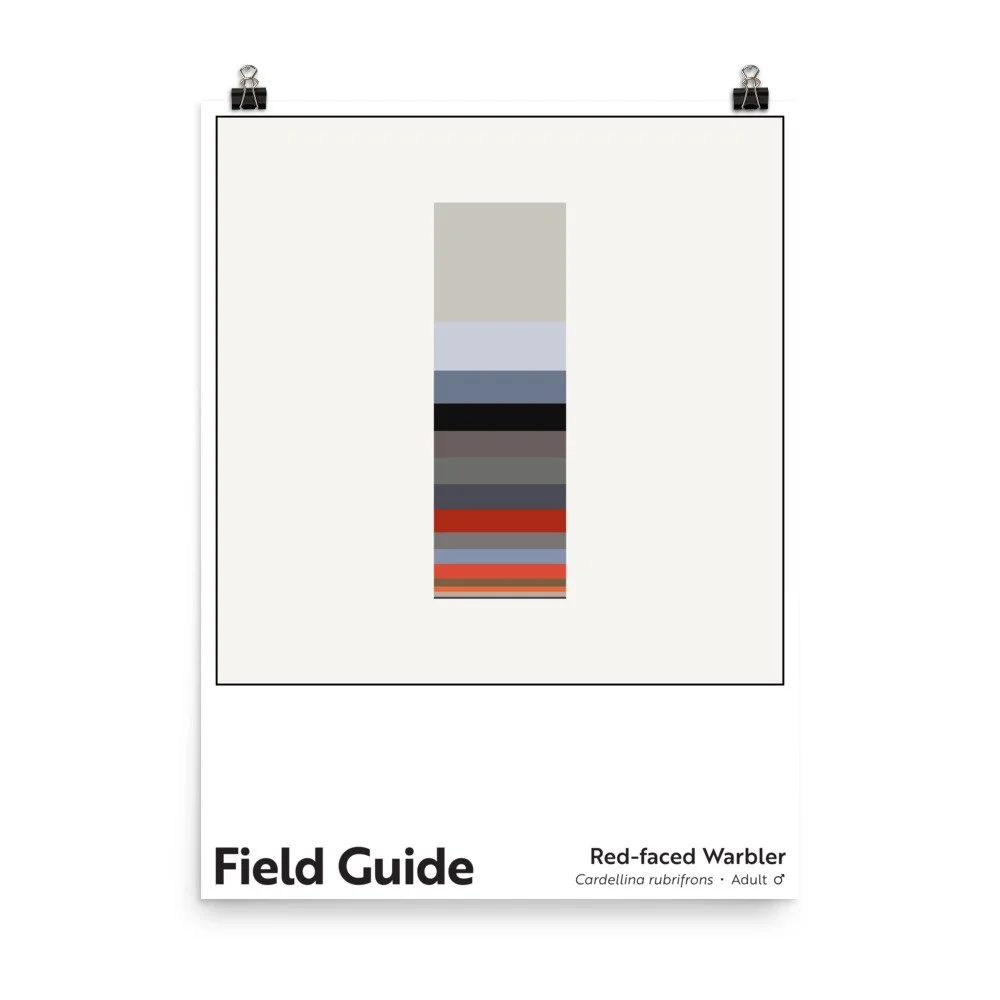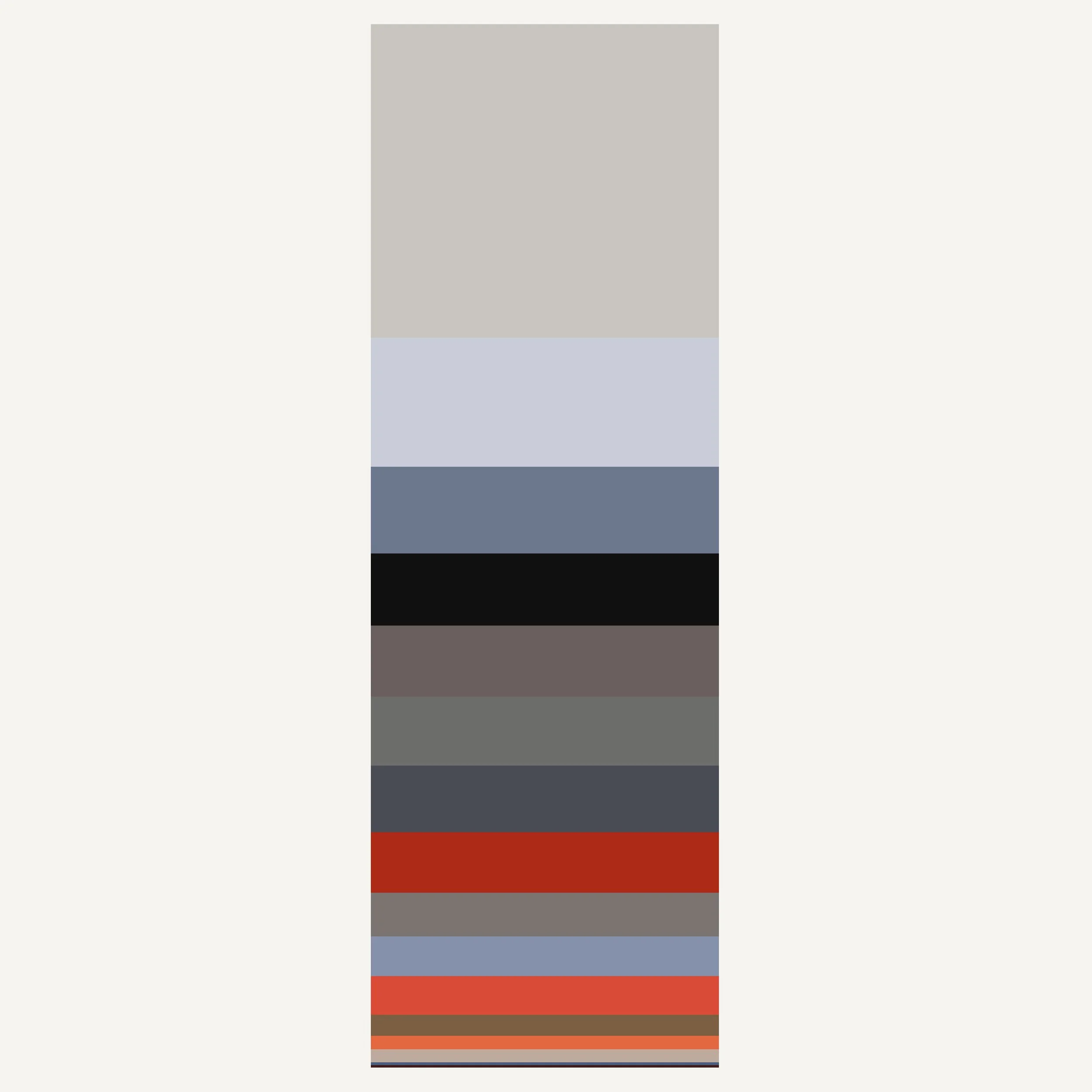 Image 1 of 2
Image 1 of 2

 Image 2 of 2
Image 2 of 2



Field Guide : Red-faced Warbler (Male)
Unlimited edition. 18 x 24 inch, museum-quality poster on matte paper.
As a general rule, drab-looking or hard-to-find bird species receive less attention from researchers than do more striking and/or accessible birds. The red-faced warbler is by no means drab, and it occurs in montane New Mexico, Arizona, Mexico, El Salvador, Guatemala, and Honduras; nonetheless, it is “one of the least studied North American warblers,” according to the Cornell Lab of Ornithology, with “many aspects of its life history…either unknown or reported inaccurately.” You’d think its arresting mug – a bold, black brow visor and whitish comb set against flamboyant fire-engine red, tomato, and chili – would grab the attention of more ornithologists. Maybe the bird’s lovely color column will be good PR? 😜
Male and female red-faced warblers look very similar, but the male’s facial color is generally brighter and more saturated. Although the red-faced warbler is seasonably monogamous, the species is known to have more “extra-pair activity” than most birds that pair up for the breeding season. In fact, research suggests almost three-quarters of red-faced warbler nests contain at least one young fathered by a male other than the territory owner. 😳 It doesn’t appear that it’s only males seeking additional breeding opportunities; researchers note that females also leave their nesting territories, potentially seeking “extra-pair copulations.”
The red-faced warbler is a ground nester. The female constructs a cup-like nest by scraping out or finding an existing depression on the forest floor, almost always near some structure (rock, shrub, tree trunk) that helps conceal the nest. She uses leaves, grasses, bark, pine needles, and other forest floor detritus to create a roof. Researchers have only observed females brooding the eggs, but both parents assist with the feeding once the chicks hatch.
Note: These archival poster prints feature rich, appealing colors. I encourage customers to take care in handling them until they are framed/protected for display; the darker colors on the matte paper can be scratched. They ship rolled, so customers need to flatten them before framing (or have their framer do so).
Charitable Sales Model: Whenever one of these poster prints is purchased, a charitable contribution equal to 10% of the print’s cost (or $3.60) is made to a nonprofit working to tackle environmental or social challenges. Read more about my charitable sales model here.
Unlimited edition. 18 x 24 inch, museum-quality poster on matte paper.
As a general rule, drab-looking or hard-to-find bird species receive less attention from researchers than do more striking and/or accessible birds. The red-faced warbler is by no means drab, and it occurs in montane New Mexico, Arizona, Mexico, El Salvador, Guatemala, and Honduras; nonetheless, it is “one of the least studied North American warblers,” according to the Cornell Lab of Ornithology, with “many aspects of its life history…either unknown or reported inaccurately.” You’d think its arresting mug – a bold, black brow visor and whitish comb set against flamboyant fire-engine red, tomato, and chili – would grab the attention of more ornithologists. Maybe the bird’s lovely color column will be good PR? 😜
Male and female red-faced warblers look very similar, but the male’s facial color is generally brighter and more saturated. Although the red-faced warbler is seasonably monogamous, the species is known to have more “extra-pair activity” than most birds that pair up for the breeding season. In fact, research suggests almost three-quarters of red-faced warbler nests contain at least one young fathered by a male other than the territory owner. 😳 It doesn’t appear that it’s only males seeking additional breeding opportunities; researchers note that females also leave their nesting territories, potentially seeking “extra-pair copulations.”
The red-faced warbler is a ground nester. The female constructs a cup-like nest by scraping out or finding an existing depression on the forest floor, almost always near some structure (rock, shrub, tree trunk) that helps conceal the nest. She uses leaves, grasses, bark, pine needles, and other forest floor detritus to create a roof. Researchers have only observed females brooding the eggs, but both parents assist with the feeding once the chicks hatch.
Note: These archival poster prints feature rich, appealing colors. I encourage customers to take care in handling them until they are framed/protected for display; the darker colors on the matte paper can be scratched. They ship rolled, so customers need to flatten them before framing (or have their framer do so).
Charitable Sales Model: Whenever one of these poster prints is purchased, a charitable contribution equal to 10% of the print’s cost (or $3.60) is made to a nonprofit working to tackle environmental or social challenges. Read more about my charitable sales model here.